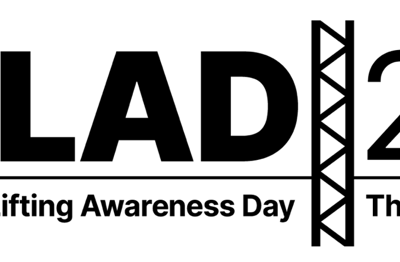Ever-changing consumer tastes mean that most products today contain several ingredients and flavourings sourced from multiple suppliers. Ready meal manufacturers are challenged with demands for transparency in sourcing ingredients to create tasty, shortcut recipes, while maintaining food safety across their production lines.
To avoid damage to brand image and additional costs caused by contaminants, Phil Brown, managing & sales director of Fortress Technology Europe, discusses the risks that might make food operators with multiple preparation and cooking processes more vulnerable and how to avoid expensive mistakes.
The market outlook for ready meals in the UK is strong, with Statista’s market report forecasting the sector to grow at a CAGR rate of approximately 3.5% each year between 2019 to 2023. According to Euromonitor’s annual report, the UK is Europe’s biggest ready meal market, driven by fast-paced lifestyles, plant-based alternatives and meals with healthy associations.
Manufacturers are now facing new challenges due to increasingly complex supply chains. Evolving issues regarding product recall regulations present growing risks to food manufacturers across Europe. When sourcing ingredients for ready meals from multiple suppliers, manufacturers must consider the finances, time, and manpower required to devote to effective risk management.
Greater pressure means food safety standards are being compromised, explains Phil. Based on recent figures from the RPC, recalls of unsafe food products in the UK have jumped by 40% from 145 to 203 in the last year. Although allergy-related concerns dominate these figures, a sharp increase in metal contaminants continues to take prevalence.
Risks on the rise
In 2019, multiple high-profile cases have gained traction in the media. In recent months, three major UK supermarkets – Tesco, Lidl and Waitrose – recalled a range of food products that may have been contaminated with metal and plastic. Around the same time, Walls and Millers’ range of sausage rolls, pies and pasties were urgently pulled from supermarket shelves over fears they could contain metal pieces.
The rising percentage of recalls implies regulations and current systems for food safety aren’t totally aligned with changes in increasingly automated food production. Meanwhile consumers are more connected and social media adds greater pressure on food manufacturers to list ingredient sources.
In 2016, 39% of survey participants questioned by the International Food Information Council Foundation (IFIC) implied that they would switch to a brand that provides more in-depth product information. In a repeat survey in 2018, the number of people requesting this level of ingredient transparency had virtually doubled to 75%.
Given that brand reputation is more important than ever and cutting corners on safety could be an expensive mistake in the long term, Phil highlights the importance of strategic planning when selecting food inspection checkpoints to optimise detection lines.
Since investment in inspection systems by food factories is predicted to continue, risk professionals should constantly revisit inspection protocols and hypothetical contamination scenarios to look at potential holes in the security chain. From a practical perspective, food processing inspection risks should be reviewed every 12 months as part of a defined HACCP assessment.
Convenience without contaminants
Convenience meals typically have more production processes and ingredients introduced than any other food item. As a result, metal contamination risks are increased.
Putting it into context, Phil says: “With an average ready meal, there can be more than eight production steps between sourcing ingredients to packing, and more than five different product components each requiring, cleaning, peeling and inspection, slicing, cooking, quality inspection, flavouring and finally weighing and packing.”
Phil advises to take a step back and look at each processing point, the equipment that’s being used, and every possible contamination scenario. Revisit this constantly, and don’t wait for a crisis to hit before developing your recall response.
“Although most external companies supplying ingredients are extremely diligent, the more extensive a supply chain and the further inspection equipment is pushed up the line up, the greater the risks,” adds Phil.
Operating a metal detector to catch a contaminant in its largest form is generally viewed as the best method to avoid costly waste. In practice, this means you eliminate it at the cheapest part of the process, but also you catch it before the metal is chopped up and dispersed into multiple products. At this point the cost to a business and brand reputation is considerably higher.
Manufacturers may optimise performance by installing several metal detectors positioned at critical control points throughout the process, rather than a single, big ‘catch-all’ detector at the end of the line.
Utilising upstream metal detection can also identify smaller contaminants which may not be possible at the end of the line system. HACCP guidance states that critical control points (CCPs) should be located at any step where hazards can be prevented, eliminated, or reduced to acceptable levels.
Finding the right solution
For dry ingredients, e.g. uncooked rice or flour, processors will often install a large gravity style inspection configuration upstream. With wet raw ingredients, i.e. meat, a conveyor metal detector would often be installed at the start of the processing line to identify any ferrous or non-ferrous metals, such as stainless steel. This ensures that no metal is fed into the grinder where it could damage equipment and also be fragmented into smaller parts that are more difficult to detect and remove.
Once processed, liquid, paste, and soft meats are often passed through a pipeline metal detector prior to mixing with other ingredients. At the final stage, filled and sealed ready meals can then be passed individually or in bulk through a conveyor metal detector aperture.
A metal detector that can run multiple frequencies simultaneously, such as the Fortress Interceptor, is ideal for these types of elevated convenience products, as it can accurately inspect a variety of conductivities at the same time. Conquering the longstanding challenge of ‘product effect’ caused by moisture in meat, poultry, seafood, and even vegan ready meals, the Interceptor not only increases inspection sensitivity, but also helps to eliminate false rejects.
Quality assurance must always be a priority when considering a production line. Many manufacturers disregard the value of optimised metal detector systems to their business. However, zero recalls in the past doesn’t mean a ready meal manufacturer is immune to future threats. “Rather than considering the ‘if’ it can be prudent to think instead about the ‘when’,” concludes Phil.
Manufacturers of convenience foods incorporate multiple ingredients from numerous suppliers. Vigilance is essential to offset financial damage from waste as well as protecting brand reputation. To mitigate further contaminant risks, the decision to invest in high quality inspection equipment will pay dividends in the long run.







